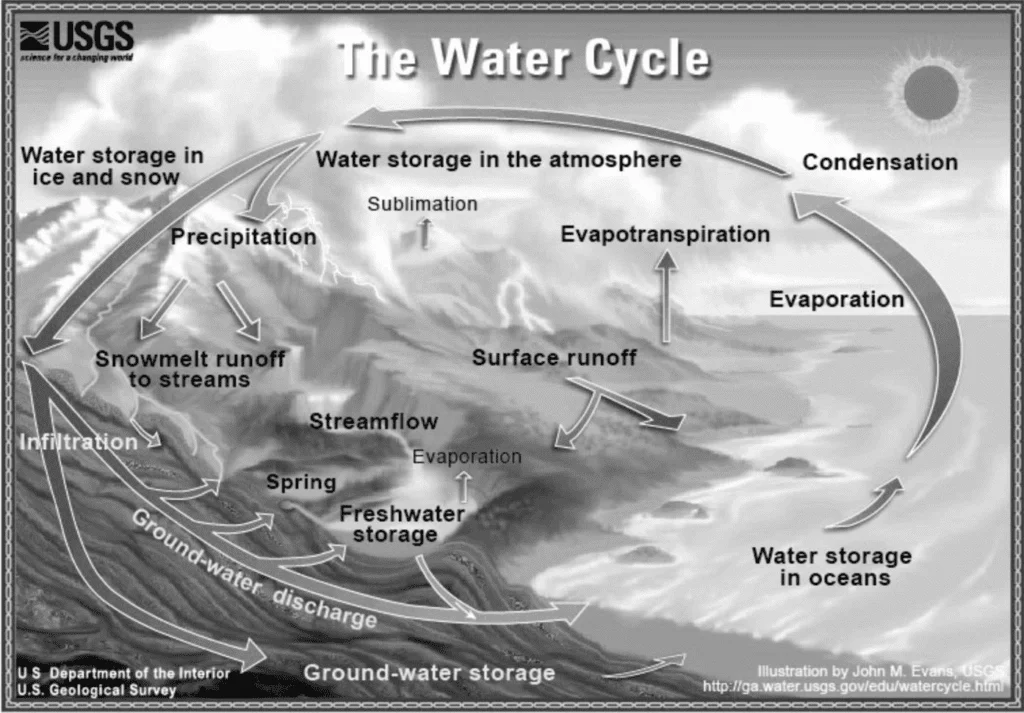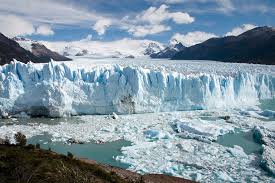Biogeochemical Cycles: This is the process whereby matter such as water, carbon, nitrogen, and phosphorus recycle within the ecosystem and through the atmosphere. All living things depend on water. It is through the processes of condensation, evaporation, and precipitation that water cycles through the atmosphere.
It takes one water molecule about 4000 years to make it through the cycle. The hydrologic cycle also known as the water cycle, is the circular pathway of water on Earth from the atmosphere, to the surface, below ground, and back.
Part of that pathway involves humans and other organisms, which all have bodies made mostly of water. Precipitation, such as rain or snow, falls to Earth. Some of this precipitation seeps into the ground, some drops into ponds, streams, lakes, or other waterways, and some forms puddles or other temporary pools.
Depending on the type of soil and rocks surrounding it and also on its location, groundwater may empty directly into oceans. Sometimes water flows first into lakes, swamps, or wetlands, but these along with rivers, streams, and other freshwater sources also feed into oceans.
Hydrologic Cycle
The hydrologic cycle also known as the water cycle, is the circular pathway of water on Earth from the atmosphere, to the surface, below ground, and back. Part of that pathway involves humans and other organisms, which all have bodies made mostly of water.
Precipitation, such as rain or snow, falls to Earth. Some of this precipitation seeps into the ground, some drops into ponds, streams, lakes, or other waterways, and some forms puddles or other temporary pools.
Depending on the type of soil and rocks surrounding it and also on its location, groundwater may empty directly into oceans. Sometimes water flows first into lakes, swamps, or wetlands, but these along with rivers, streams, and other freshwater sources also feed into oceans.

Ammonification
Nitrates released by soil bacteria are taken up by plants, which convert them into organic compounds such as amino acids and proteins. Nitrogen continues along the cycle as animals eat plant or animal matter.
Read Also : Factors Influencing Soil Moisture
When decomposers break down animal excretions or dead animal and plant matter, nitrogen is returned to the soil as ammonium, in a process called ammonification.
Denitrifying bacteria use nitrate as an oxygen source, releasing nitrogen gas into the atmosphere as a waste product. Some nitrogen also enters the soil as a result of atmospheric fixation by lightning.
Lightning‘s energy breaks apart nitrogen molecules in the atmosphere. Nitrogen recombines with oxygen in the air, forming nitrogen oxide. The combination of nitrogen oxide with rainwater forms nitrates, which are absorbed by the soil.
In summary, when decomposers break down animal excretion or dead animal and plant matter, nitrogen is returned to the soil as ammonia in a process called Ammonification.
The nitrogen cycle is of particular interest to the Ecologists, because nitrogen availability can affect the rate of key ecosystem processes.
Depending on the type of soil and rocks surrounding it and also on its location, groundwater may empty directly into oceans. Sometimes water flows first into lakes, swamps, or wetlands, but these along with rivers, streams, and other freshwater sources also feed into oceans.

